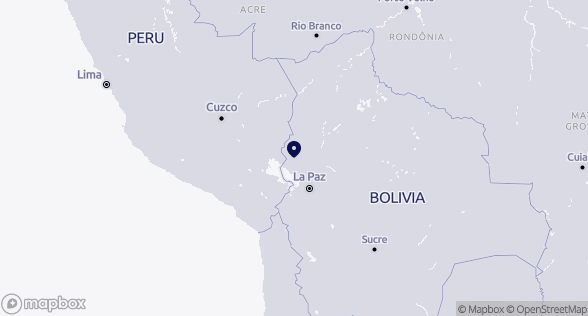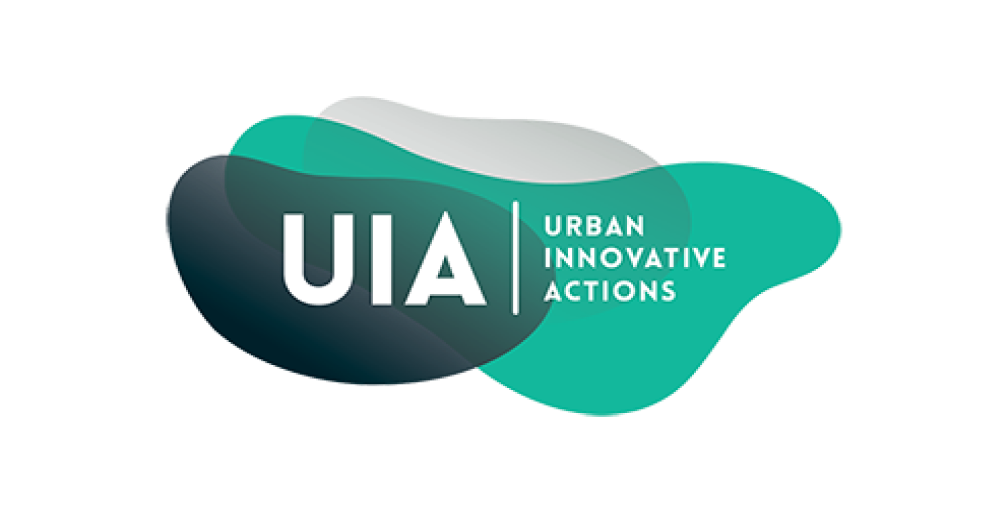
Mataró
Spain
Yes, We Rent! - Matarò
Yes, We Rent! sought to reactivate private vacant flats for the rental housing market and make them available at a below-market price to households in need of affordable housing. It would do so by offering a guaranteed rent and financial and organisational support to renovate properties. It also trained teenagers at risk of becoming NEET (not in education, employment or training) with a view to their employment in the housing renovation sector.
The project’s main activity has been to test an organisational model for a multi-stakeholder housing cooperative, which, although publicly funded and controlled, draws on the empowerment and self-management potential of cooperatives. The cooperative includes both owners and tenants, who will in the long run fund its running costs and renovation work. It also matches the flats in its portfolio with a tenant from the housing cooperative.
The project supports owners with financial and organisational support to renovate and energy retrofit their dwellings with a subsidy up to €20 000 per flat. It is also able to guarantee owner revenue in the event of rent arrears. Once signed up to the project owners receive an architect’s proposal from the municipality for the renovation works and may choose to carry out the renovation themselves or delegate the work to the municipality.
This is a case study as part of an UIA report. You can access all of the project's resources on its project collection page.
2. Matarò and Just and Green Transitions
2.1 What are the implications for Matarò?
Matarò is committed to reducing CO2 emissions by 42.7% by 2030 based on 2005 levels and is ready to further adapt its goals in the event of new, more ambitious EU goals. Its current local strategy for the Climate, ‘Matarò pel clima’, sprang from the Covenant of Mayor’s Sustainable Energy Action Plan, signed in 2016. The city also aligned its Agenda 2030 with the UN’s Sustainable Development Goals to ensure that all citizens are on board in the green transition.
Energy poverty is one of the most pressing just transition issues. It mostly affects low-income social groups: large families with a migrant background, the elderly with meagre pensions, and the unemployed, who concentrate in certain city neighbourhoods. Energy poverty is also an adaptation issue, as the low-income groups or the energy poor elderly are particularly more vulnerable in the face of the more frequent heatwaves. Recently, city policies have attempted to connect the expansion of renewable energy production with the fight against energy poverty. Over the 2005-2020 period, the generation of energy from renewable sources increased by 55.8%. Today, the city, which is already buying 100% renewable electricity, is investing by using the roofs of public buildings to produce solar energy that will be distributed to low-income families in high-poverty neighbourhoods. The first installations are currently in progress with energy set to be supplied to the first one hundred families by the end of 2022. Although the relationship with traditional energy providers on this matter has proven challenging, the city is expanding this initiative to other neighbourhoods and is designing the selection criteria for beneficiary families. The City Department of Energy is leading this effort and plans to open an ‘Officina de transition energetica.’ The city is also implementing a national plan for the energy retrofitting of buildings, which is funded by the EU Recovery and Resilience Facility, aimed at helping the most vulnerable populations living in the most degraded flats.
Rents have increased over recent years by over 30% against a background of shortages in the rental market because of the extremely high homeownership rate, coupled with an almost non-existent social housing supply. At the same time, there are nearly 2,800 vacant flats in the city, often belonging to multiple owners. Sixty% of these dwellings are concentrated in two peripheral neighbourhoods. Owners leave these properties empty for multiple reasons, including speculation, but also because they lack the resources to renovate them for the rental market or are afraid of tenants falling into arrears. Mataró is faced on one hand with the problem of ‘people without flats and flats without people’ and on the other with too many families living in apartments which are inefficient or unsustainable in terms of energy consumption. Housing affordability and energy poverty are two, closely connected strategic issues for Matarò’s just transition.
2.2 What barriers has Matarò faced implementing the just & green transition?
The main barrier has been the lack of social housing or any other housing provision model that ensures access for low-income groups to higher-quality, affordable, and more energy-efficient housing.
Another significant barrier is the regulatory obstacles to the development and spread of community-based energy projects, which could contribute to reducing energy poverty.
3. How does Yes, We Rent promote the just & green transition?
The ‘Yes, we rent!’ approach contributes to many EU goals: expanding affordable housing is one of the main aspirations of the EU Urban Agenda; letting vacant flats is part of the Action Plan of the Urban Agenda for a ‘Circular Economy’; tackling youth unemployment is an important goal of the European employment strategy; creating a cooperative as part of the social economy contributes to the EU Commission’s Social Business Initiative.
In the Matarò context, the housing-energy nexus is of immense importance for achieving a just transition.
First, leaving a significant part of the available supply off the market prevents an optimal use of the existing building stock. It also contributes to sprawl and land take. Empty dwellings typically concentrate in certain peripheral areas, which are characterised by dynamics of poverty concentration and immigrant segregation. In this sense, Yes, We Rent! had a socio-spatial logic.
Second, the shrinkage in supply pushes rental costs up, thus reducing the overall affordability of housing and limiting housing quality, especially for low-income residents who are not able to buy or rent at the currently extremely high market prices. Yes, We Rent! focuses on these residents. It has helped working-class families, sometimes with an immigration background and it has helped specific discrete groups, such as transgender individuals.
Third, in a highly fragmented housing ownership landscape, energy retrofitting mostly relies on individual decisions making renovations very unlikely for a large part of the stock, slowing the progress towards a more energy sustainable city. Indeed, so far, 11 owners have submitted a grant application: 7 owners have requested the municipality manage their flats and 4 owners have embarked on their own rehabilitation of their empty flats with the goal of letting them after the end of the project.
Yes, We Rent! has tackled these issues through a new, simultaneously collective and public form of intervention aimed at changing the system of incentives for property owners. Yes, We Rent sought to increase affordability while rebalancing power between property owners and renters through the establishment of a new tenant cooperative which, stakeholders hope, will manage an ever-larger segment of the housing supply as time goes by. The idea is also that the mild stick approach of taxing empty dwellings and applying ceilings to the soft rental market, as was already in place in the city under Catalan law, was not working and that Matarò needed a new approach.
4. Keys to success
a. Navigating in the existing regulatory framework
The existence of regulations and resources allowing the project to offer a strong incentive package (renovation, rent guarantees) and this also included a conducive regulatory system (allowing Matarò an exemption to paying the ‘vacancy tax’ in the set-up phrase, for example). The future of these incentives remains uncertain for after the Yes, We Rent! project.
b. Reflecting upon a viable business model
The distribution of costs between property owners, renters, and, eventually, the city, as well as the number of flats mobilised in the scheme, are a pivotal issue in terms of viability. The balance to be achieved is complex. Tenants must accept cooperative membership costs while enjoying a lower rent compared with market rates. Owners must accept lower rents and membership costs while at the same time receiving renovation subsidies and guarantees on unpaid rents. In this model, the lower the level at which rents can be negotiated, the greater margin will be to increase the cooperative members’ monthly/annual membership fee, which provides funds that will be used to pay for renovation.
The business model is currently the subject of discussion. Running costs are currently covered by public funding under the Yes, We Rent! project and in a context of below-market rate rents, user members must pay €100 to the cooperative each month. 20% of this payment supports a Social Fund to cover any incidents that may arise in the cooperative. This monthly fee may be reduced according to the tasks carried out by the member within the cooperative. The cooperative has established a fixed fee of 12% of the rent for all flats. It is not known what the specific financial arrangements will be after the end of the funded project when the cooperative will need to establish different funding arrangements. If it cannot maintain low rents, then it will struggle to charge for services.
5. Scaling up and replication potential
At the time of writing ‘Yes, We Rent!’ has attracted the attention of 58 interested owners and 31 have signed up to take part.
Local conditions in Matarò are similar to other southern-European cities with high levels of homeownership, a low level of social housing provision, and consequently higher barriers in terms of housing affordability and difficulty in organising extensive renovation and retrofitting processes. Across Europe, 1 in 6 properties are vacant. In this sense, ‘Yes, We Rent!’ has a high replication potential wherever these features are present. However, a few key challenges need to be taken into consideration if contemplating such an approach:
- The cooperative’s financing model and its implications for housing affordability:
- Different models are possible: one model would entail the full self-funding of the cooperative by mixing below the average and market-level rents; another would see the city continuing the financial support of the cooperative, lowering the pressure on rents and membership fees.
- The stability of the memberships:
- Since the cooperative is subject to the Urban Leasing Law, flats are only rented to the cooperative for 5 years and owners can withdraw from the scheme after that. Financial incentives may not be enough. It is unclear if they can continue at the same level or even at all to guarantee the participation of property owners. Creating social and relational incentives, such as being part of a cooperative movement, as well as nurturing relationships among the owners and the tenants, and public recognition, are going to be important for participation in the longer term.
All these factors show that the replication potential depends on the financing model that is chosen and this naturally depends on policy choices about costs versus benefits.
References
FEANTSA and the Foundation Abbé Pierre (2015) An Overview of Housing Exclusion in Europe, https://www.feantsa.org/download/fap_eu_gb2861057678142834491.pdf
About this resource
The Urban Innovative Actions (UIA) is a European Union initiative that provided funding to urban areas across Europe to test new and unproven solutions to urban challenges. The initiative had a total ERDF budget of €372 million for 2014-2020.
Similar content






Want to replicate this urban practice in your city?
Apply to an EUI City-to-City Exchange
Connect with a peer city who can bring you solutions and expertise and apply together to receive EUI support
More infos on EUI websiteBrowse existing Innovative Actions looking for Transfer Partners and cities willing to do a City-to-City Exchange looking for peers